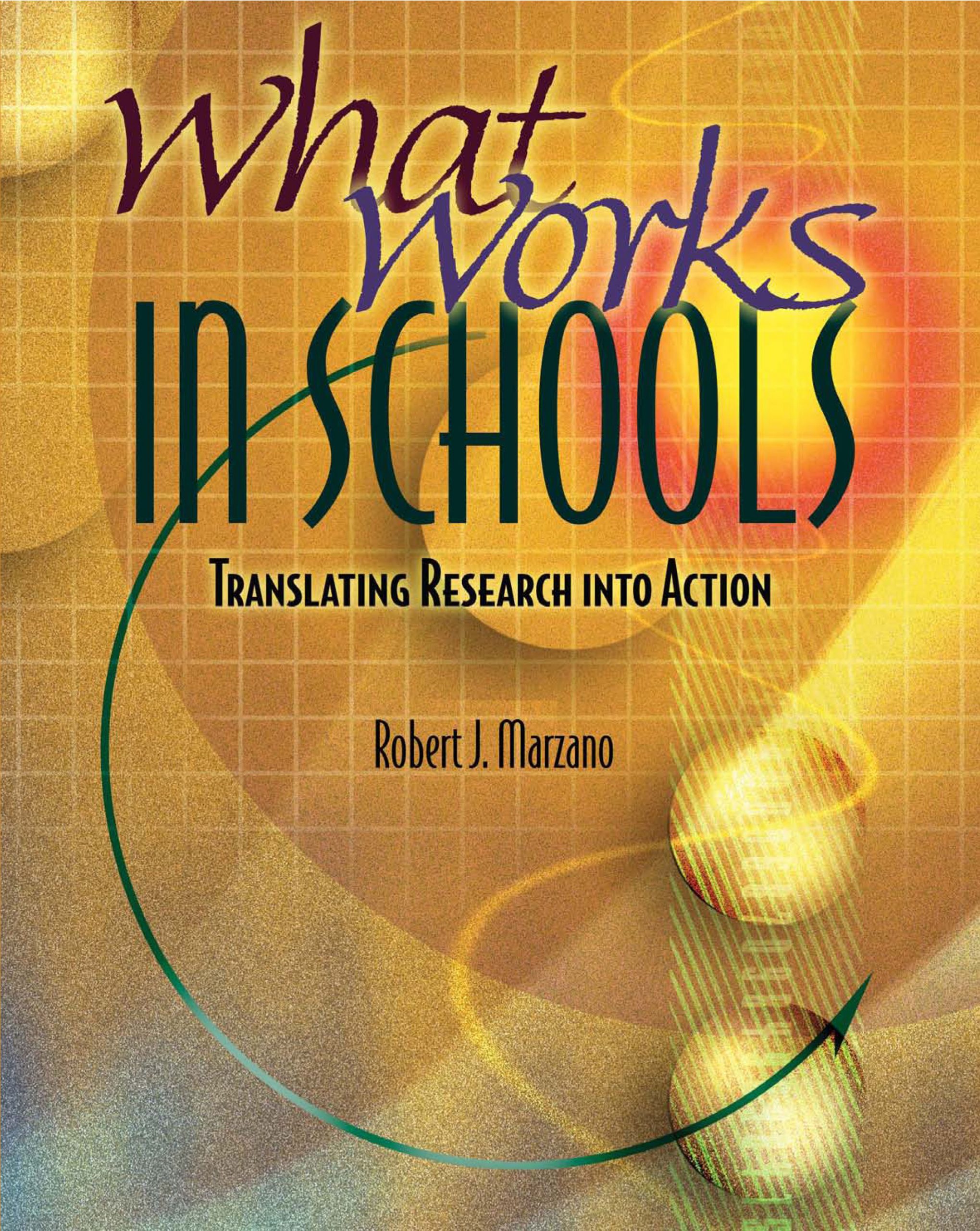Improving the opportunity to teach automatically increases the opportunity to learn. With this mindset, the school leader is making a guaranteed and viable curriculum possible. Addressing the time issue is an early step in improving the opportunity to teach and learn.
I highly recommend Marzano’s What Works In Schools for any aspiring and existing building leader. It is a foundational read for school improvement. I think it is easily a top 5 must read for educators. The seminal work provides research-based action steps. I see the book as a recipe for a quality school. Doing these 5 things on the school level and ensuring that teachers and students/parents are doing their assigned tasks then you are on the road to a successful school.
things on the school level and ensuring that teachers and students/parents are doing their assigned tasks then you are on the road to a successful school.
As with all recipes you have to consider the specific school stakeholders and climate, so it is not simple or easy. We have to consider the pace of implementation. Furthermore, depending on when you arrived, the resources needed for successful school improvement may have to wait until next year. Needless to say, there are other variables that factor into the school improvement process.
Do you know how many hours a class spends on instruction?
Guaranteed & Viable Curriculum means Improving the Opportunity to Learn and Teach
With that said, the book remains an excellent tool. Providing a guaranteed and viable curriculum forces us to think about time usage. I agree with Marzano when he says that “lengthening the school year or the school day is probably impractical”. At this time, we should ask ourselves, how are we using the time we have? According to What Works In Schools, teachers spend 13,104 hours per year in a classroom. But, 69% of that time is actually used on instruction. I am confident that you would agree that we need to “protect the instructional time that is available.” He recommends reducing interruptions including reducing  announcements. Although these are great solutions, I want to add Arne Duncan et al to the conversation:
announcements. Although these are great solutions, I want to add Arne Duncan et al to the conversation:
High-functioning systems can amplify the accomplishments of their educators, but a dysfunctional school or district can undermine the impact of even the best teachers. We need schools and districts whose climates and cultures, use of time,… are optimized to continuously improve outcomes for the students they serve.
To be clear, the Department of Education suggests that we optimize existing workflows to improve time usage. The attendance workflow, for example, costs our schools time, money, and energy to successfully complete. It takes class and planning time to complete just this one workflow. Reallocating the time spent on outdated workflows to improving teaching and learning improves instruction while reducing teacher frustration and burnout.
Improve the Opportunity to Teach without the burnout!
The deleterious effects of teacher burnout is felt daily. When educators take enough mental health and sick days, their impact is reduced to that of a first year teacher. Furthermore, when our teachers are stressed their fuses are shorter leading to escalation rather than deescalating strategies being used. This dysfunctional use of time “undermines the impact” of our best teachers.
What is the solution? How can we maximize the existing time? Yes, we have to examine the standards we are expected to teach. However, we can control procedures in the building that steal time.
Who and what procedures are stealing time? And more importantly what are you going to do about it?
References:
https://www2.ed.gov/documents/labor-management-collaboration/vision-statement.pdf
https://teachingcommons.lakeheadu.ca/stress-ineffective-teaching
What Works in Schools: Translating Research Into Action, Robert Marzano
